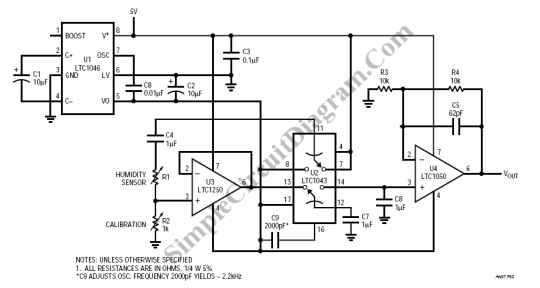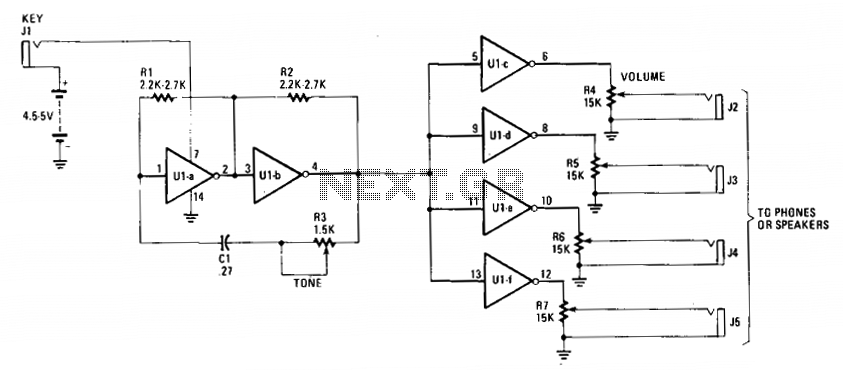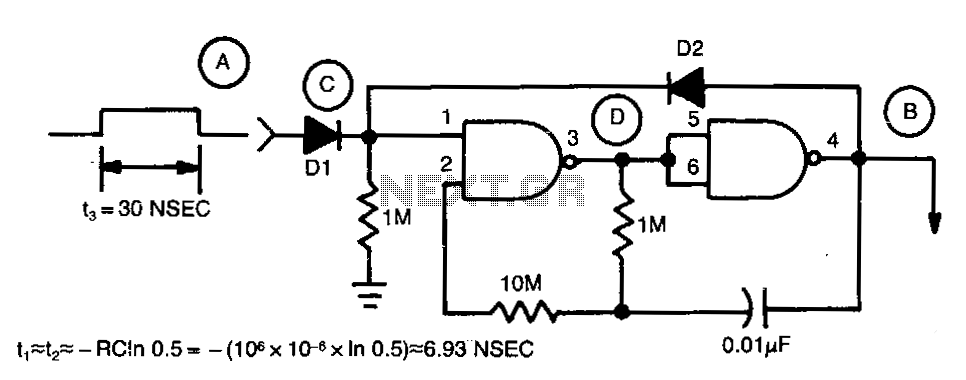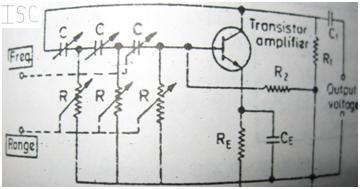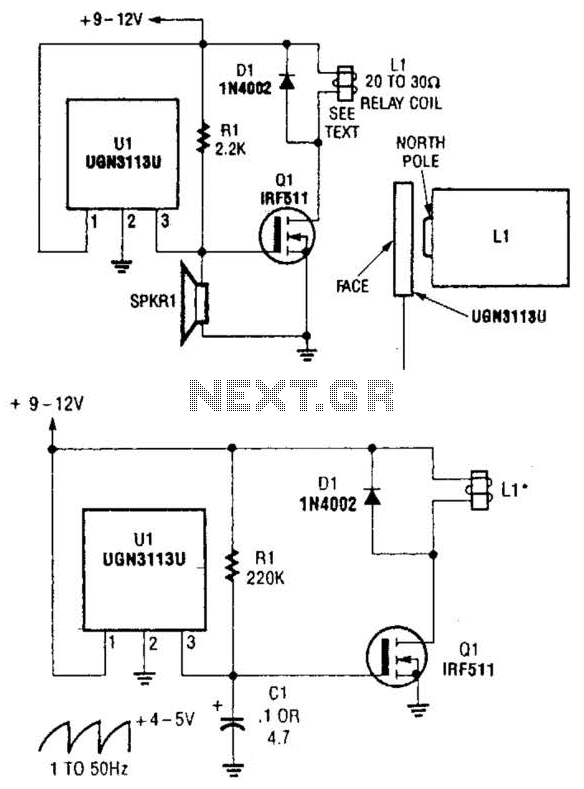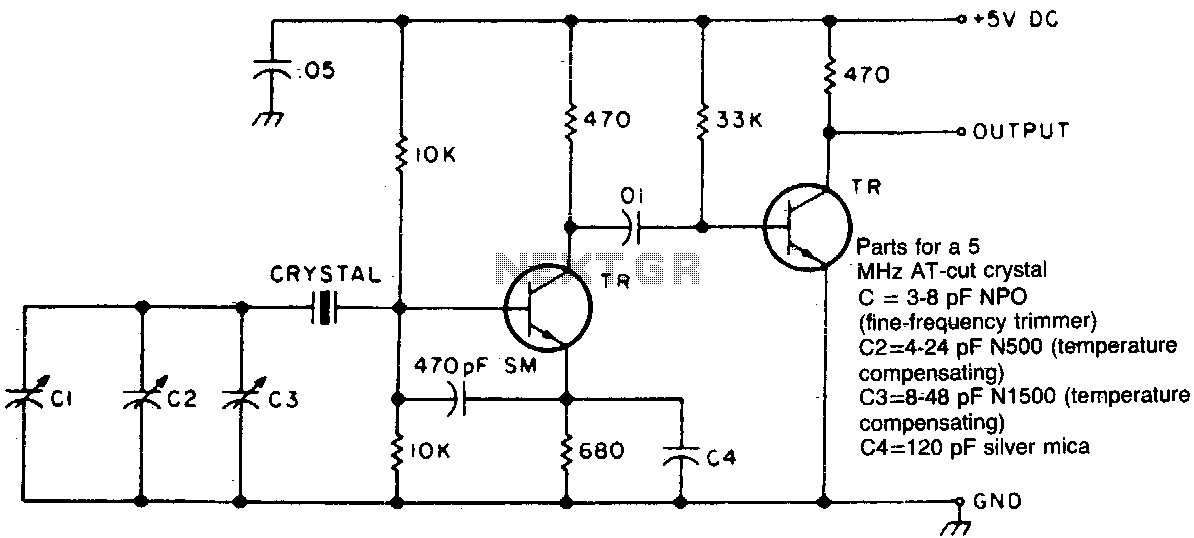
Mutiple Output Crystal Oscillator Sensor
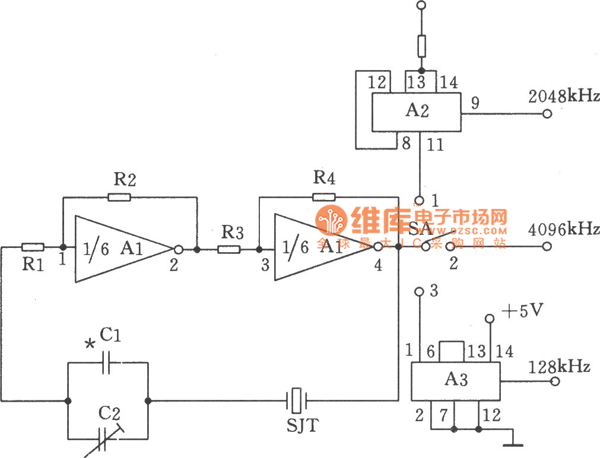
The figure illustrates a multiple output crystal oscillator, which primarily consists of three gates of Al, four resistors, two capacitors, and a crystal. Resistors R1 to R4 offset two inverters within the linear range and are connected between pin 4 and pin 1 of A1 through crystal SJT to establish the feedback loop. This configuration enables oscillation.
The multiple output crystal oscillator operates by utilizing the fundamental properties of the crystal to stabilize the frequency of oscillation. The three gates of Al (likely referring to a type of amplifier or inverter) serve as the core components that generate the oscillatory output. The crystal, acting as a frequency-determining element, ensures that the oscillator produces a stable and precise output frequency, which is critical in various applications such as clock generation, signal processing, and frequency synthesis.
Resistors R1 through R4 play a vital role in setting the operating point of the inverters, ensuring that they function within their linear range. This configuration is crucial for maintaining the stability and reliability of the oscillation. The feedback loop established by connecting the crystal between the specified pins allows for the necessary phase shift and gain required for sustained oscillation. The two capacitors in the circuit may be used for coupling or decoupling purposes, contributing to the overall performance and stability of the oscillator.
In summary, this multiple output crystal oscillator design effectively combines the elements of feedback, frequency stabilization, and gain control to produce reliable oscillatory signals suitable for a variety of electronic applications.As shown in the figure is a multiple output crystal oscillator. It is mainly composed of 3 gates of Al, four resistances, two capacitances and a piece of crystal. R1 ~ R4 offset two inverters within the linear range, and they are connected between foot 4 and foot 1 of A1 by crystal SJT to provide the feedback loop. It will produce oscillation only on th.. 🔗 External reference
The multiple output crystal oscillator operates by utilizing the fundamental properties of the crystal to stabilize the frequency of oscillation. The three gates of Al (likely referring to a type of amplifier or inverter) serve as the core components that generate the oscillatory output. The crystal, acting as a frequency-determining element, ensures that the oscillator produces a stable and precise output frequency, which is critical in various applications such as clock generation, signal processing, and frequency synthesis.
Resistors R1 through R4 play a vital role in setting the operating point of the inverters, ensuring that they function within their linear range. This configuration is crucial for maintaining the stability and reliability of the oscillation. The feedback loop established by connecting the crystal between the specified pins allows for the necessary phase shift and gain required for sustained oscillation. The two capacitors in the circuit may be used for coupling or decoupling purposes, contributing to the overall performance and stability of the oscillator.
In summary, this multiple output crystal oscillator design effectively combines the elements of feedback, frequency stabilization, and gain control to produce reliable oscillatory signals suitable for a variety of electronic applications.As shown in the figure is a multiple output crystal oscillator. It is mainly composed of 3 gates of Al, four resistances, two capacitances and a piece of crystal. R1 ~ R4 offset two inverters within the linear range, and they are connected between foot 4 and foot 1 of A1 by crystal SJT to provide the feedback loop. It will produce oscillation only on th.. 🔗 External reference
